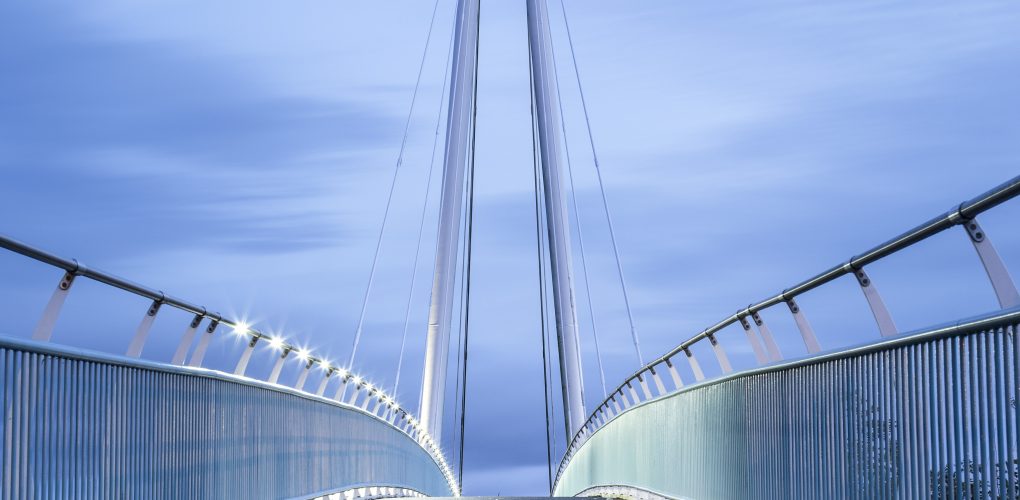Designers and engineers study past bridge issues and failures to learn how to build better structures in the future. Every new design and technological advancement is the result of lessons learned over thousands of years of bridge-building history.
From the earliest stone and wood plank structures to today’s marvels of modern technology, every evolution has come out of wear-and-tear due to weather and natural conditions, design flaws, environmental issues, injuries, accidents, or catastrophic collapses.
In the first part of this report, we’ll look at six recent innovations that have helped improve how bridges are designed, engineered, and built. In the second part, we’ll review six more.
1. Drones
Drones, or unmanned aerial vehicles, are a relatively new phenomenon. Most people associate them with the devices used to take panoramic pictures and shoot overhead videos, or think of them as toys that their kids play with or military devices.
Another option: They’re capable of collecting images and data about existing bridges and those under construction. Drones are able to take pictures, videos, and X-rays. They can also conduct sonic scans. The information they provide to bridge managers and engineers is concise, clear, detailed, and timely. This has taken the ability of experts to make critical decisions about structures to a higher level than ever before. Drones help make inspections more thorough and ensure that construction work is completed as intended. They are even able to help with mapping and planning for future development projects.
2. Modern lifts
Drones are able to generate images and other information that can indicate whether bridges are in good condition or might have structural problems. However, it usually takes a hands-on inspection to really understand what’s going on. Modern lifts make it possible for people to gain access to hard-to-reach areas of bridges. The latest have narrow footprints and extraordinary flexibility.
They allow inspectors and workers to safely reach extreme heights, along with providing access to sections of bridges under the roadbed. This is even possible when structures are located in precarious positions over rivers, valleys, and busy highways.
3. Thermoplastic bridges
What can be better in today’s era of climate change and environmental concern than bridges made of nearly 100% post-consumer recycled and industrial plastics? Scientists and engineers have leveraged a thermoplastic material that was first used in railroad ties to build viaducts. The materials can be used in virtually all structural components, including pilings, girders, railings, pier caps, decking, and more. The components are strong and flexible, making them a possible solution for many bridge projects.
4. Prefabricated bridge elements and systems (PBES)
One of the biggest challenges faced by bridge construction crews is having to build things on site in dense, heavily-trafficked areas. PBES are bridge elements that are either built adjacent to bridge sites or completely offsite. Once completed, they’re transported to construction zones. After they arrive, they’re installed relatively quickly. This is a huge evolution from traditional on-site methods using concrete, which must be reinforced, poured, and allowed time to cure.
Added benefit: PBES components are stronger and resist weather and wear-and-tear from natural elements better than old-school materials.
5. Slide-in bridge construction (SIBC)
SIBC takes the PBES tactics covered in the section above to the ultimate level. A new replacement structure is built on temporary supports next to an existing bridge. (The new bridge typically uses many PBES elements.) Once construction is completed, the road to the existing bridge is closed. The old structure is demolished or slid out of the way. Then the new bridge is moved into place. As a final step, the approaches are connected and paved over. Traffic is often restored in as little as 48 to 72 hours.
6. Geosynthetic reinforced soil-integrated bridge systems (GRS-IBS)
GRS-IBS is a construction method that combines closely spaced geosynthetic reinforcement with granular soils into an all-new composite material. It’s used to build bridge abutments and approach embankments. The technique has become popular because the composite material is less likely to settle and create bumps at the ends of bridges.
Check out the second part of this report in our next post, where we cover six additional innovations that moved bridge development and maintenance into the future.

